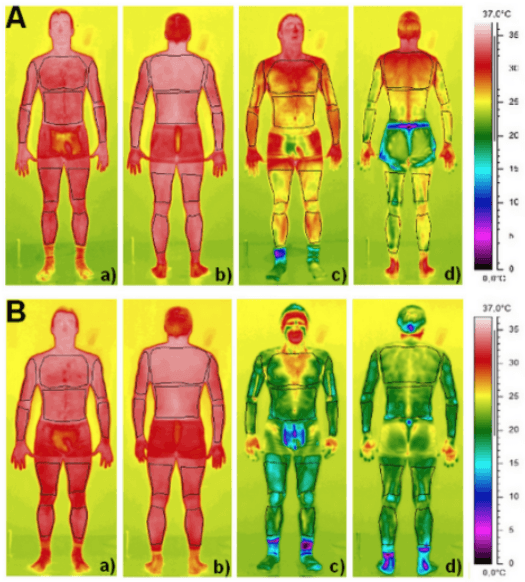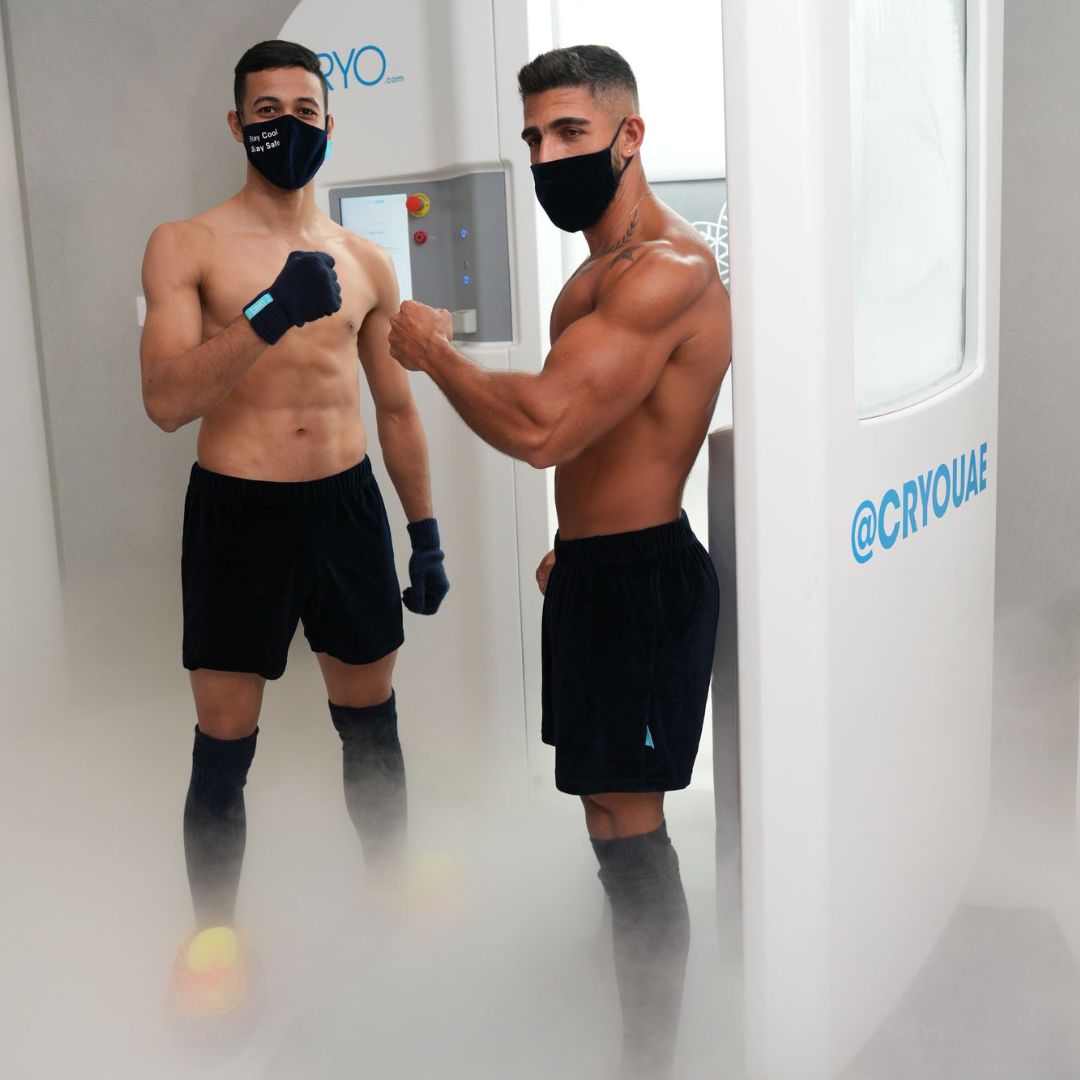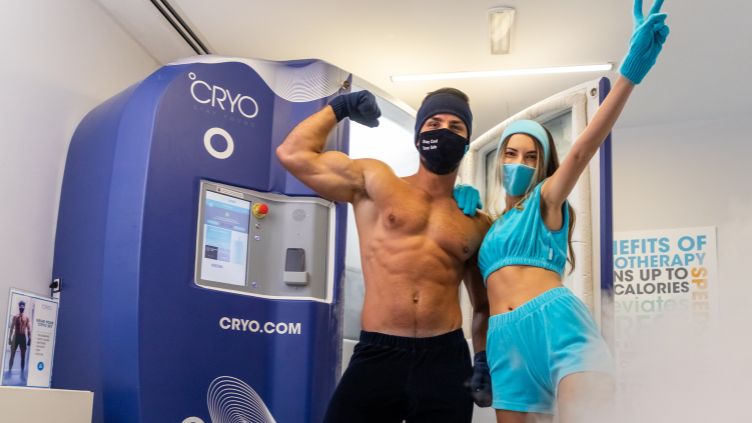CRYO Chamber vs. CRYO Sauna: What’s the difference?
More and more centers are opening worldwide providing whole-body cryotherapy services using a lot of different technologies. To reach “cryo temperatures” either electricity or nitrogen is used. Within the nitrogen- cooled units, we differentiate between chambers and saunas, either via “direct” or “indirect” exposure to nitrogen. This all results in essential questions from the client: What’s the safest and best technology to reach my goals?
Which technologies exist?
Whole body cryo chambers are chambers (single or multiple patients at once possible) in which the client is entirely exposed to the cold treatment. These chambers either use electricity or nitrogen “indirectly.” Partial body cryotherapy units (head out) has reported lower operating temperatures compared to whole body cryo chambers by evaporating liquid nitrogen being sprayed onto the body (“direct” contact). Information on the exact temperatures during exposure is often lacking, which has an impact on controlling safety and physiological responses.
Table 1: an overview of the different cryotherapy technologies, temperature ranges and safety values
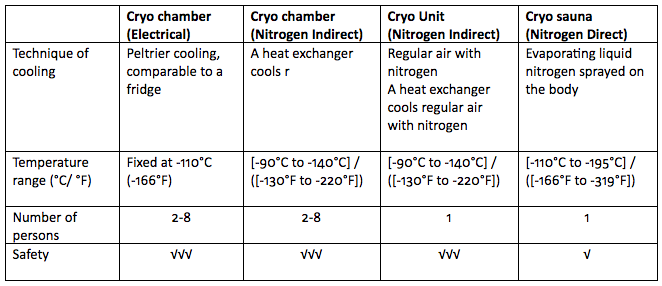
(*A new technology published by Bouzigon and colleagues based on forced convection (wind chill) is not taking into account yet as hardly any data on this technology is published).
Safety
In one of our previous blog on safety, we summarized different factors that should be taking into account regarding safety and whole body cryotherapy. One of these factors is the technology used; the electrical and “indirect” technologies are favorable over the “direct” technologies often used in cryo saunas. The electrical and “indirect” technologies minimize the risks of asphyxia, skin damage and cold burns.
What can we say about effectiveness comparing the different technologies?
First, let us define the thermal state. The thermal state is described as the total of the thermophysiological responses in the body implying, skin-, core and muscle temperature changes together with subjective measures as thermal comfort and sensation. The variation in the thermal state is traditionally assessed to measure the efficiency of whole-body cryotherapy. After a session of whole-body cryotherapy the thermal state is altered; skin-, core- and muscle temperature, thermal comfort and sensation decrease.
The central questions from clients:
- Do electrically cooled air technologies provide different effects compared to nitrogen cooled technologies?
- Is a session of 3 minutes at -90°C/-130°F providing different effects compared to a session at -130°C/- 202°F using an “indirect” nitrogen-cooled air technology?
Concerning the first question; a study from Hausswirth and colleagues was the first comparing an electrically cooled chamber (3 minutes at -110°C/- 166°F) to a “direct,” nitrogen cooled sauna (3 minutes at -160°C/-256°F). Skin temperature (see illustration 1), directly after, differed a lot. Conclusions of the study are that whole body cooling is much more significant than partial body cooling in the activation of the autonomic nervous system, the system responsible for nerve function and cellular activation. Outcomes prove that the treatment effect is a direct result of the change in thermal state, in this example, a uniform skin temperature reduction.
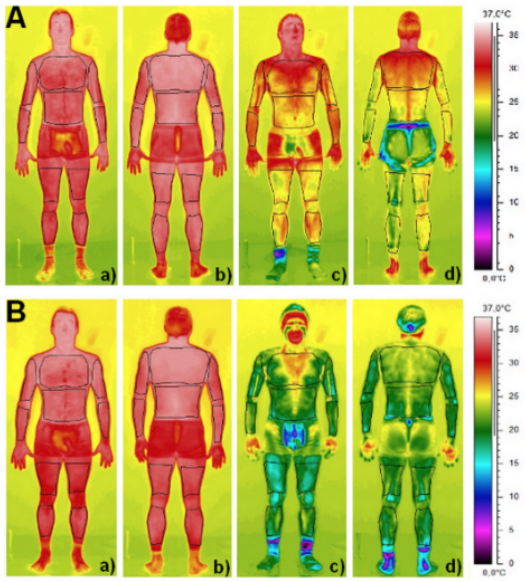
(illustration 1: thermal image directly after exposure to partial body cooling (A) and whole body cooling (B), blue being colder than green, green being colder than red, a figure from Hausswirth et al.2013).
A limitation of the electronic chamber is that one cannot change temperature settings, and it appears that for the “direct” nitrogen sauna’s the temperature distribution is non-homogeneous, with the lowest temperatures reported on the lower part of the leg.
Which brings us to question 2;
Is a session of 3 minutes at -90°C/-166°F providing different effects compared to a session at -130°C/ -202°F using an “indirect” nitrogen-cooled air technology?
Data comparing different treatment temperatures is scarce and more data is warranted. However, own data (which will be presented during the upcoming cryogenics conference in Sint-Petersburg, 12-14 September 2018), showed a difference in the thermal state following protocol A (3 minutes at -90°C/-166°F) and B (3 minutes at -130°C/-202°F). No differences are found in core temperature, but a significant difference is found for the drop in skin temperature directly after the session until 40 minutes into recovery.
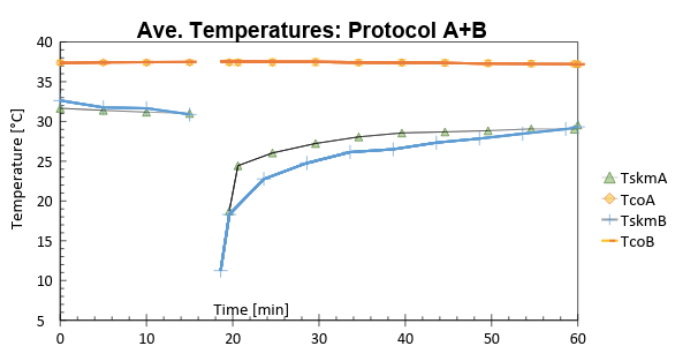
Figure 1: Average core- and skin temperature (N=10) following two different whole-body cryotherapy protocols (A &B).
Regarding safety and effectiveness the main conclusions are:
- “Direct” systems have a higher risk of asphyxia, skin damage and cold burns
- An equal distribution of the cold over the full-body results in a more optimal change in thermal state. With this thermal state regarded as the proxy for the wanted effects for the client.
- More intense treatment protocols (i.e., lower temperatures) trigger more significant skin temperature drops directly after exposure and for over 40 minutes into recovery.
- Besides taking individual characteristics into account (Cuttell et al. 2017), the treatment temperature should be considered.
References
- Bouzigon, R. et al. Validation of a new whole-body cryotherapy chamber based on forced convection. J. Therm. Biol. 65, 138–144 (2017).
- Cuttell, S., Hammond, L. E., Langdon, D. & Costello, J. T. Individualising the exposure of -110C whole body cryotherapy: The effects of sex and body composition. Journal of Thermal Biology 1879, (2017).
- Hausswirth, C. et al. Parasympathetic activity and blood catecholamine responses following a single partial-body cryostimulation and a whole-body cryostimulation. PLoS ONE 8, e72658 (2013).
Tiemessen, IJH. et al. Thermal state response following different dosages of whole body cryotherapy. The 15th Cryogenics 2018 IIR international conference Sint Petersburg, Russia, Proceedings, (not published yet)


